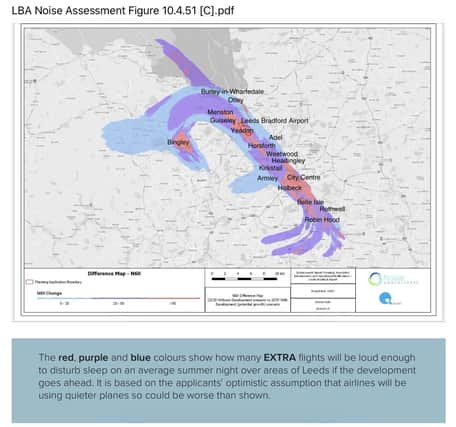Council must consider social equity when it decides Leeds Bradford Airport’s planning application


Local newspapers have regularly featured the proposal, which will facilitate a near doubling of passenger numbers, more flights and longer flying hours. Even in the middle of a pandemic, Leeds residents have recognised its potential impact.
There’s one important aspect of the debate that’s been overlooked: Social Equity. Airlines and airports peddle the myth that flying’s something we all do. In fact, just 15 per cent of the UK population take 70 per cent of all flights and 52 per cent of people don’t fly.
Advertisement
Hide AdAdvertisement
Hide AdOnly one in four flights was made by passengers from households with a gross income of £28,750 or less. One in 17 was made by passengers from households earning less than £14,400. The average household income of leisure travellers was £45,000.
These figures aren’t surprising, but they have huge implications for the proposed airport expansion. Leeds City Council has a duty to balance the needs of all residents in the city. Most people in Leeds earn less than the national average salary so fly infrequently or not at all. Should they endure increased CO 2 emissions, air pollution and noise to satisfy the appetite for flying of higher earners?
As LBA’s data shows (above) it’s not just North Leeds that will be impacted by increased flights. Four of the seven most deprived wards in the city will suffer the worst levels of sleep disturbance due to night-time aircraft noise. It’s in these areas of Leeds that people who never use the airport are most likely to live. Their housing is also likely to be less well sound-insulated, so increased night flying will disturb them more.
Climate change also disproportionately affects poorer residents and that will be accelerated by more flights from LBA. In heatwaves people living in overcrowded houses, in more densely built-up areas with little access to open green spaces, suffer more. In extreme cold weather it’s people in houses which are poorly thermally insulated, and experiencing fuel poverty, who bear the brunt.
Advertisement
Hide AdAdvertisement
Hide AdA recent study by Kings College London found ultrafine particle pollution from Heathrow far away from the immediate vicinity of the airport. A similar picture could reasonably be expected in Leeds. Leeds residents are already 21 times more likely to die from air pollution than road accidents.
Convincing people of the benefits of airport development is a carefully targeted marketing campaign. The only face-to-face public consultation was held in Bramhope and few Leeds residents could reach the venue by direct bus service. The consultation may have catered for affluent, car-owning families who use the airport, but community engagement should gather comment from everyone affected by a planning proposal. LBA has relied on the airport development being a long way down poorer Leeds residents’ list of concerns, especially during a pandemic.
Social equity considerations are essential when weighing arguments for and against LBA’s proposal. The councillors who sit on Leeds City Council’s planning panel must gauge what’s best for most residents, not just for those vocal frequent flyers who enjoy the convenience of a local airport at the expense of our health and wellbeing.
Comment Guidelines
National World encourages reader discussion on our stories. User feedback, insights and back-and-forth exchanges add a rich layer of context to reporting. Please review our Community Guidelines before commenting.